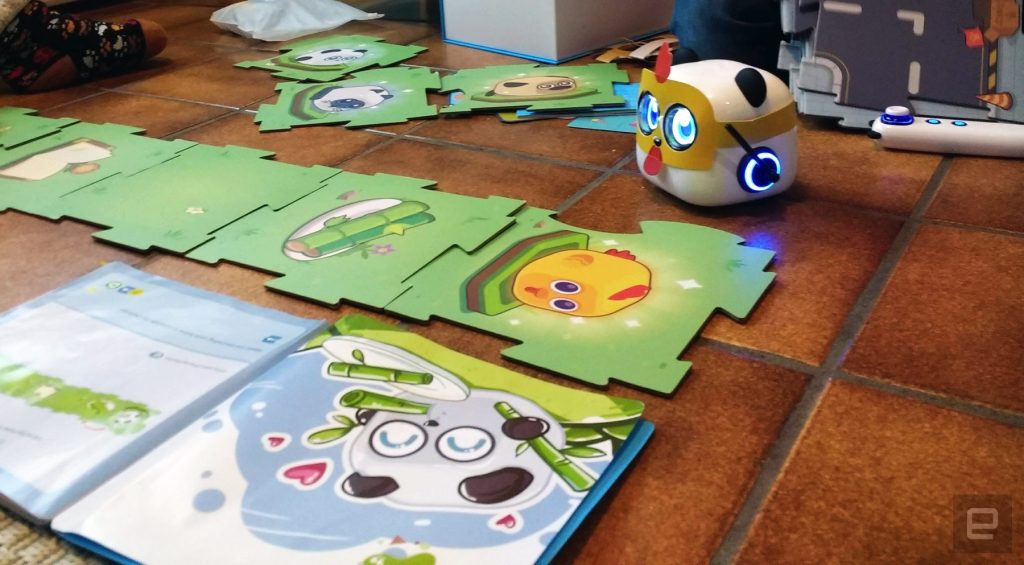My five-year-old and seven-year-old children are constantly fighting over who will get the first iPad. We have one, and they have to use it in small doses, usually when I finally. His favorite app? Scratchjr is the go-to coding tool for MIT kids. He loves the symbol. No. They love the blade, just like a little human in the 21st century. How To Tiny Robot Screen-Free Coding For Kids?

They love coding and don’t want to give them their hardware, so I tried something new. This is also something that sounds very intuitive and can work: screen-free coding.
With the latest studies providing a very damaging picture of the effects of screen time on children’s development, I’m happy to hear that screen-free coding is now annoying. This is exactly what it looks like: a way to explore the screen’s core concepts without coding. In short, coding simply returns a set of instructions specific to a person or thing to achieve the desired result. Nothing in this definition requires a screen.
Also Read: How To Use Snapchat?
It is about mathematical logic, despite its ability to identify and solve a problem and solve it in practical parts. You can ask your child to teach arithmetic thinking strategies.
However, my kids want to eat peanut butter sandwiches while they are encoding. They hear the “symbol” telling me how to get them off so well with it. Want to replace Scratchjär Purple and curse him and jump. They want a pixel and plastic look for whistles, hoars, and zings. They do not want to see their mother making sandwiches due to their bad attitude. How To Tiny Robot Screen-Free Coding For Kids?
The preschool, the group enters MTIN, a cubic-shaped Makeblock robot. She is cute It is fun He talks. He walks around, laughs, and sings. It is screen-free but uses the same graphics as Scratchjr as an encrypted card.
In addition to the many USB rechargeable robots – with attractive ears and panda . The kit comes with 36 coding instruction cards, which are cardboard versions of Scratchjr’s graphics. To create markable views for many to navigate, Makeblock 24 includes a reversible map template that children can assemble as jigsaw pieces.
Also Read: Great Sets Of Wireless Headphones
In the box, you will also find a Makeblock rechargeable disk controller, which allows children to extract code using codecs. Then includes storybooks, click-to-play game cards, and decorative items, including three animal masks for MTIN. From a puppy, kitty, or chick, my kids like chick: on chick tiles, em clini clucks. My children think it is hilarious.
Storybook activities are a great introduction to many. It starts with a simple programming challenge: to move the code mTiny into a tile in a straight line, then another, then several, each of which causes the robot to react in different ways when (we have our robot Is marked) land. Now, although they are using the map – the more challenging reverse side of the tiles – they are still returning to those early lessons when they need to solve a more complex problem. My five-year-old daughter still works through the storybook first, before she breaks free with the map side of the tiles, “just to warm up,” she says.
To encode the robot, the children move the codex in the order they want, starting with the green “go” sign and ending with the “stop” icon, then placing each of them in that order with a pen. Tap from to which robot they want to move.
Tiles and cards are essentially messages hidden on them.
Each is printed with CMYK (Cyan Magenta Black Yellow), which is very standard. But the black ink here is embedded in carbon and is intended for point printing patterns that can be read by many and Pen. The sensor in the pen converts these hidden points into instructions and sends them to the robot. The sensor below MTiny uses those points to tell them which tile it is sitting on.
It is in this way that when she lands on a board with bamboo, she closes her eyes and snores on the bed slab, and rolls her eyes at the sirens on the police station tiles. This gave me a reason to loudly call the kids to place the cards in the box or a cute storage bag, not to discourage them, not to bend them, not to munch on them. If the cards are damaged, there will be no encryption.
As children became better at using mTiny, they created more sophisticated visuals with tiles and started using more challenging codecs such as complexities and facial expressions. Now when they want to move mTiny four squares in a row or bend around in a circle, they click on the “on” encoding card and use the “x4” encoding card.